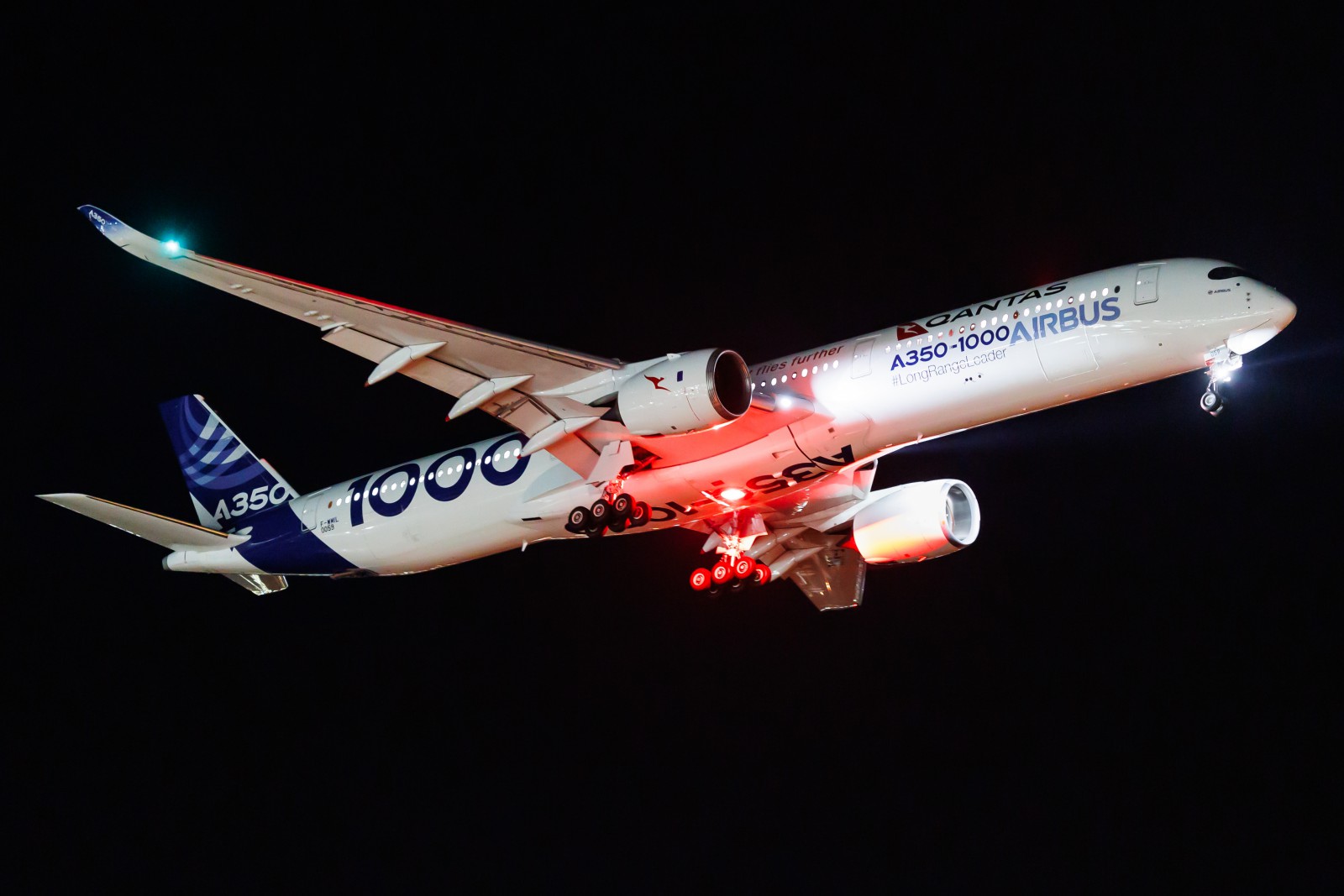Qantas chooses Airbus A350-1000 for Project Sunrise
Qantas will buy up to 12 Airbus A350-1000 jets as part of Project Sunrise, with flights to begin in the first half of 2023.
By David Flynn, December 13 2019
Share this article:
Qantas will create a fleet of up to 12 Airbus A350-1000 jets under its ambitious Project Sunrise, which intends to begin non-stop flights from Sydney and Melbourne to the likes of London and New York in the first half of 2023.
However, no firm order will be placed until Qantas clears the final hurdles of regulatory approval by the Australia's Civil Aviation Safety Authority and negotiations with Qantas pilots. Qantas says "a final go/no go decision" will be made in March 2020.
“Between the research flights and what we’ve learned from two years of flying Perth to London, we have a lot of confidence in the market for direct services like New York and London to the east coast of Australia," said Qantas Group CEO Alan Joyce.
“The A350 is a fantastic aircraft and the deal on the table with Airbus gives us the best possible combination of commercial terms, fuel efficiency, operating cost and customer experience."
Also in the Airbus's favour: unlike Boeing's proposed 777X, the A350 has been "thoroughly proven after more than two years in service. This is the right choice for the Sunrise missions and it also has the right economics to do other long haul routes if we want it to."
Under the Qantas contract – worth an estimated $3bn, assuming a discount of around 50% on the A350-1000's $530 million list price – Airbus will add an extra fuel tank to the A350-1000 and slightly increase the jet's maximum takeoff weight to deliver the 18-20 hours of non-stop flying required for Sunrise routes.
As previously reported by Executive Traveller, the Project Sunrise fleet will carry around 300 passengers in all-new first class suites and business class seats, along with premium economy and economy, the latter of which will also have extra leg-room compared to today's economy seats.
So what remains to be squared away before Project Sunrise can be given the green light?
Australia's Civil Aviation Safety Authority must approve an extension to the current operating limits required for these ultra long haul services. However, the airlines says that "based on detailed information already provided by Qantas on its fatigue risk management system, CASA has provisionally advised that it sees no regulatory obstacles to the Sunrise flights."
Industrial negotiations with the Australian and International Pilots Association (AIPA) are ongoing, with the airline describing these as "closing the last remaining gap in the Project Sunrise business case." In other words, it comes down to money.
“We’ve done a lot of work on the economics and we know the last gap we have to close is some efficiency gains associated with our pilots," Joyce says. "We’re offering promotions and an increase in pay but we’re asking for some flexibility in return, which will help lower our operating costs."
“From the outset, we’ve been clear that Project Sunrise depends on a business case that works. We’ll only commit to this investment if we know it will generate the right return for our shareholders given the inherent commercial risks."
Qantas will buy up to 12 Airbus A350-1000 jets as part of Project Sunrise, with flights to begin in the first half of 2023.
By David Flynn, December 13 2019
Share this article:
Qantas will create a fleet of up to 12 Airbus A350-1000 jets under its ambitious Project Sunrise, which intends to begin non-stop flights from Sydney and Melbourne to the likes of London and New York in the first half of 2023.
However, no firm order will be placed until Qantas clears the final hurdles of regulatory approval by the Australia's Civil Aviation Safety Authority and negotiations with Qantas pilots. Qantas says "a final go/no go decision" will be made in March 2020.
“Between the research flights and what we’ve learned from two years of flying Perth to London, we have a lot of confidence in the market for direct services like New York and London to the east coast of Australia," said Qantas Group CEO Alan Joyce.
“The A350 is a fantastic aircraft and the deal on the table with Airbus gives us the best possible combination of commercial terms, fuel efficiency, operating cost and customer experience."
Also in the Airbus's favour: unlike Boeing's proposed 777X, the A350 has been "thoroughly proven after more than two years in service. This is the right choice for the Sunrise missions and it also has the right economics to do other long haul routes if we want it to."
Under the Qantas contract – worth an estimated $3bn, assuming a discount of around 50% on the A350-1000's $530 million list price – Airbus will add an extra fuel tank to the A350-1000 and slightly increase the jet's maximum takeoff weight to deliver the 18-20 hours of non-stop flying required for Sunrise routes.
As previously reported by Executive Traveller, the Project Sunrise fleet will carry around 300 passengers in all-new first class suites and business class seats, along with premium economy and economy, the latter of which will also have extra leg-room compared to today's economy seats.
So what remains to be squared away before Project Sunrise can be given the green light?
Australia's Civil Aviation Safety Authority must approve an extension to the current operating limits required for these ultra long haul services. However, the airlines says that "based on detailed information already provided by Qantas on its fatigue risk management system, CASA has provisionally advised that it sees no regulatory obstacles to the Sunrise flights."
Industrial negotiations with the Australian and International Pilots Association (AIPA) are ongoing, with the airline describing these as "closing the last remaining gap in the Project Sunrise business case." In other words, it comes down to money.
“We’ve done a lot of work on the economics and we know the last gap we have to close is some efficiency gains associated with our pilots," Joyce says. "We’re offering promotions and an increase in pay but we’re asking for some flexibility in return, which will help lower our operating costs."
“From the outset, we’ve been clear that Project Sunrise depends on a business case that works. We’ll only commit to this investment if we know it will generate the right return for our shareholders given the inherent commercial risks."


